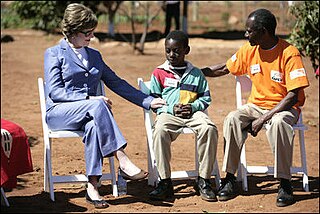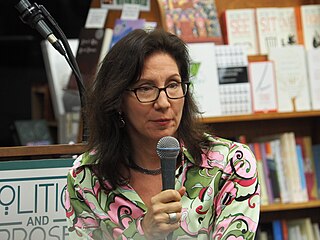Related Research Articles

Human sexual activity, human sexual practice or human sexual behaviour is the manner in which humans experience and express their sexuality. People engage in a variety of sexual acts, ranging from activities done alone to acts with another person in varying patterns of frequency, for a wide variety of reasons. Sexual activity usually results in sexual arousal and physiological changes in the aroused person, some of which are pronounced while others are more subtle. Sexual activity may also include conduct and activities which are intended to arouse the sexual interest of another or enhance the sex life of another, such as strategies to find or attract partners, or personal interactions between individuals. Sexual activity may follow sexual arousal.

Sexual intercourse is sexual activity involving the insertion and thrusting of the male penis inside the female vagina for sexual pleasure, reproduction, or both. This is also known as vaginal intercourse or vaginal sex. Sexual penetration has been known by humans since the dawn of time, and has been an instinctive form of sexual behaviour and psychology among humans. Other forms of penetrative sexual intercourse include anal sex, oral sex, fingering and penetration by use of a dildo, and vibrators. These activities involve physical intimacy between two or more people and are usually used among humans solely for physical or emotional pleasure. They can contribute to human bonding.

Virginity is the state of a person who has never engaged in sexual intercourse. The term virgin originally only referred to sexually inexperienced women, but has evolved to encompass a range of definitions, as found in traditional, modern and ethical concepts. Heterosexual individuals may or may not consider loss of virginity to occur only through penile-vaginal penetration, while people of other sexual orientations often include oral sex, anal sex, or manual sex in their definitions of losing one's virginity.

Abstinence pledges are commitments made by people, often though not always teenagers and young adults, to practice abstinence, usually in the case of practicing teetotalism with respect to abstaining from alcohol and other drugs, or chastity, with respect to abstaining from sexual intercourse until marriage; in the case of sexual abstinence, they are sometimes also known as purity pledges or virginity pledges. They are most common in the United States among Catholic and Evangelical Christian denominations, while others are nonsectarian.

Teenage pregnancy, also known as adolescent pregnancy, is pregnancy in a female adolescent or young adult under the age of 20. Worldwide, pregnancy complications are the leading cause of death for women and girls 15 to 19 years old. The definition of teenage pregnancy includes those who are legally considered adults in their country. The WHO defines adolescence as the period between the ages of 10 and 19 years. Pregnancy can occur with sexual intercourse after the start of ovulation, which can happen before the first menstrual period (menarche). In healthy, well-nourished girls, the first period usually takes place between the ages of 12 and 13.

A sexual network is a social network that is defined by the sexual relationships within a set of individuals.

Diagnoses of autism have become more frequent since the 1980s, which has led to various controversies about both the cause of autism and the nature of the diagnoses themselves. Whether autism has mainly a genetic or developmental cause, and the degree of coincidence between autism and intellectual disability, are all matters of current scientific controversy as well as inquiry. There is also more sociopolitical debate as to whether autism should be considered a disability on its own.

Purity rings are rings worn as a sign of chastity. Since the 1990s, Christian organizations in the United States used the purity ring as a symbol of commitment. In particular, Catholic and evangelical Christian groups which promoted virginity pledges and virginity before marriage, such as True Love Waits and Silver Ring Thing. Wearing a purity ring is typically accompanied by a religious vow to practice abstinence until marriage. Chastity rings are part of the abstinence-only sex education movement and are intended to act as a physical reminder of the wearer's chastity vow.
The epidemiology of autism is the study of the incidence and distribution of autism spectrum disorders (ASD). A 2022 systematic review of global prevalence of autism spectrum disorders found a median prevalence of 1% in children in studies published from 2012 to 2021, with a trend of increasing prevalence over time. However, the study's 1% figure may reflect an underestimate of prevalence in low- and middle-income countries.

Abstinence-only sex education is a form of sex education that teaches not having sex outside of marriage. It often excludes other types of sexual and reproductive health education, such as birth control and safe sex. In contrast, comprehensive sex education covers the use of birth control and sexual abstinence.
Adolescent sexuality is a stage of human development in which adolescents experience and explore sexual feelings. Interest in sexuality intensifies during the onset of puberty, and sexuality is often a vital aspect of teenagers' lives. Sexual interest may be expressed in a number of ways, such as flirting, kissing, masturbation, or having sex with a partner. Sexual interest among adolescents, as among adults, can vary greatly, and is influenced by cultural norms and mores, sex education, as well as comprehensive sexuality education provided, sexual orientation, and social controls such as age-of-consent laws.
The sexuality of US adolescents includes their feelings, behaviors and development, and the place adolescent sexuality has in American society, including the response of the government, educators, parents, and other interested groups.
The Institute for Social and Economic Research and Policy (ISERP) is the research arm of the social sciences at Columbia University, formerly known as the Paul F. Lazarsfeld Center for the Social Sciences. ISERP works to produce pioneering social science research and to shape public policy by integrating knowledge and methods across the social scientific disciplines. ISERP organizes an active intellectual community at Columbia University through its Faculty Fellows program, research centers, projects, and training initiatives.

Birth control, also known as contraception, anticonception, and fertility control, is the use of methods or devices to prevent unintended pregnancy. Birth control has been used since ancient times, but effective and safe methods of birth control only became available in the 20th century. Planning, making available, and using human birth control is called family planning. Some cultures limit or discourage access to birth control because they consider it to be morally, religiously, or politically undesirable.

Douglas Bernard Kirby was senior research scientist for ETR Associates in Scotts Valley, California, and one of the world’s leading experts on the effectiveness of school and community programs in the reduction of adolescent sexual risk-taking behaviors. In recent years he had also undertaken research and analysis on the impact of HIV/AIDS prevention programs in Uganda under the auspices of the World Health Organization, USAID, and other organizations.
In the United States, sex education is taught in two main forms: comprehensive sex education and abstinence-only as part of the Adolescent Family Life Act, or AFLA. Comprehensive sex education is also called abstinence-based, abstinence-plus, abstinence-plus-risk-reduction, and sexual risk reduction sex education. This approach covers abstinence as a choice option, but also informs adolescents about age of consent and the availability of contraception and techniques to avoid contraction of sexually transmitted infections. Every state within the U.S. has a mandated AIDS Education Program.

Autism, formally called autism spectrum disorder (ASD) or autism spectrum condition (ASC), is a neurodevelopmental disorder marked by deficits in reciprocal social communication and the presence of restricted and repetitive patterns of behavior. Other common signs include difficulties with social interaction, verbal and nonverbal communication, along with perseverative interests, stereotypic body movements, rigid routines, and hyper- or hyporeactivity to sensory input. Autism is clinically regarded as a spectrum disorder, meaning that it can manifest very differently in each person. For example, some are nonspeaking, while others have proficient spoken language. Because of this, there is wide variation in the support needs of people across the autism spectrum.
David Richard Gibson is an American sociologist and associate professor of sociology at the University of Notre Dame. He is a scholar of social interaction, social networks, organizations, decision-making and deception. In a review article, Eviatar Zerubavel described him "as one of sociology's leading conversational analysts". His publication Talk at the Brink: Deliberation and Decision during the Cuban Missile Crisis won the 2013 Melvin Pollner Prize for Ethnomethodology and Conversation Analysis.

Jennifer Hirsch is a professor at the Mailman School of Public Health at Columbia University. She is the deputy chair for doctoral studies in the Department of Sociomedical Studies, and co-director of Columbia's Center for Population Research. Hirsch also co-directed the Sexual Health Initiative to Foster Transformation. Her work spans topics such as gender, human sexuality, and public health. Her book, A Courtship After Marriage: Sexuality and Love in Mexican Transnational Families, which has been used widely in college classrooms, explores the lives of Mexican women in Atlanta and rural Mexico, with a focus on changing ideas of marriage among Latinx couples. Hirsch served on the Board of Directors of Jews for Racial and Economic Justice from 2014-2020 and is a member of B'nai Jeshurun

Hannah Brückner is a sociologist known for her contributions to several interdisciplinary fields, including life course studies, adolescent health, inequality, health, gender, and sexuality. She is an emeritus professor of Social Research and Public Policy at NYU Abu Dhabi.
References
- Bio on Columbia University Department of Sociology
- Full CV (2017) on Columbia University